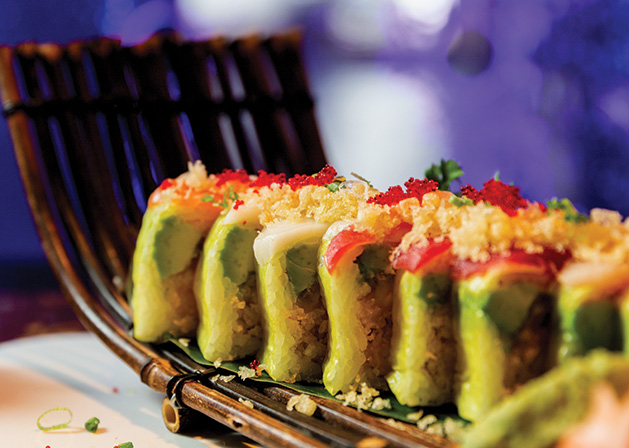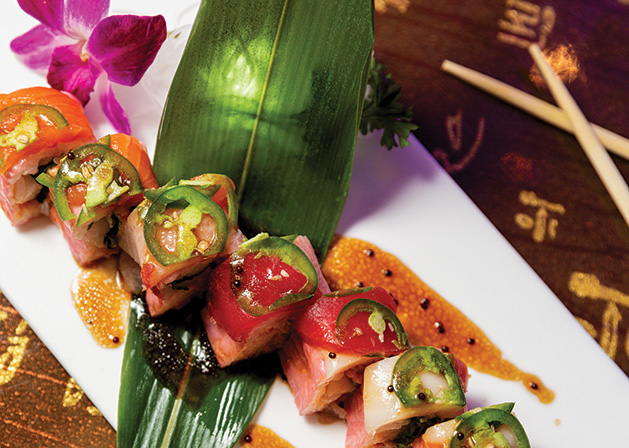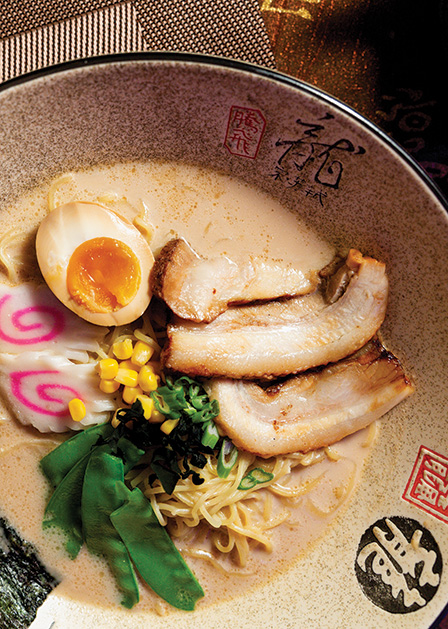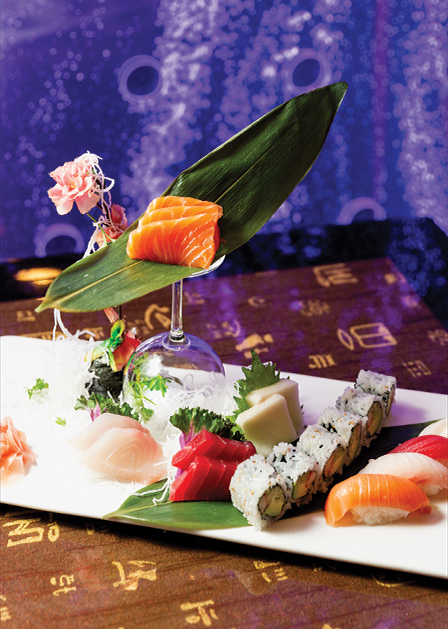
Photo: Rachel Nadeau
Sushi’s popularity in the Twin Cities western suburbs has been blossoming, thanks in large part to Kai’s Sushi & Grill.
Sushi, the Japanese dish that combines vinegared rice with ingredients such as seafood, vegetables and tropical fruits, has never been considered a staple of land-locked Minnesota, AKA the Land of Lutefisk. But its popularity in the Twin Cities western suburbs has been blossoming, thanks in large part to sushi chef and entrepreneur Kai (who just goes by his first name), owner of two Kai’s Sushi & Grill restaurants in Chanhassen and Minnetonka.
Kai emigrated to the U.S. from his native Japan as a 19-year-old two decades ago. Then he spent about 10 years learning his craft in New York City, then moving on to chef jobs in Pennsylvania, New Jersey and Las Vegas, Nev. He, his wife and young daughter came to Minnesota in 2009, looking for a good place to raise a family.
After Kai opened his Chanhassen restaurant in October 2012, it didn’t take long to become a local favorite; he expanded the space in 2014, to accommodate the growing fan base.
During his time in New York, he learned the skills necessary to master the art of sushi, a word which means “sour,” a reference to the ancient practice of using salt to preserve fish.

The learning process to become a sushi chef typically takes seven to 10 years, he says, if not more. “If you’re lucky, you learn from a good chef. If you want to be really good, it takes 15 to 20 years.” Along with the manual dexterity and precision involved in cutting, rolling and tying; “deep” knowledge is also required, Kai notes. “You have to know where every single fish comes from, what kind of fish is good, and what season is good, how to pick good rice …” For example, bluefin tuna is “top of the tuna. Ahi tuna is just so-so.” Judging freshness is obviously important, also. Brightly colored lung tissue is a sign of freshness; darkened skin is not.
Perfecting the preparation of flavorful sauces made from fish and eel is also part of the process. Every sushi restaurant has its own recipes for using rice, rice vinegar and salt. “We have a system here,” Kai says. “You have to put your heart into making sushi.”
Fish quality and availability varies by the season, depending on location. Australian tuna is good during the fall months; during the summer, he buys salmon from Scotland. Sea bass from Florida, yellow tail from Japan. Oysters from Washington state, albacore from northern Canada.
Sushi has been served in the United States since the early 1900s, following the arrival of early Japanese immigrants. The first sushi shop in the U.S. reportedly opened in 1906 in the Little Tokyo neighborhood of Los Angeles, Calif. Sushi reached the Midwest by 1905, when it was served at Japanese-themed gatherings—a fad at the time—in places like the Twin Cities, St. Louis and even Bismarck, N.D.
Then, restrictions on Japanese immigration and a changing political climate led to the declining popularity of Japanese food. The outbreak of World War II and the institution of internment caused a number of Japanese restaurants to close, but the cuisine gradually rebounded in popularity after the war ended. The Kawafuku restaurant in the Little Tokyo section of Los Angeles has been credited with being the first “true” sushi bar in the United States, the first to serve sushi prepared by a trained sushi chef.

At Kai’s, along with tuna and salmon, the menu includes various dishes made with eel, sea urchin, Bluefin tuna, Hokkaido scallops, Buri yellowtail, shrimp, Scottish salmon and more. The menu offers several dozen types of sushi rolls with a wide range of ingredients. There are dishes like ika sansai (squid salad), edamame, octo-balls (dried octopus with tempura and green onion), Thai red curry and others.
Kai’s staff includes several sous chefs, but he is still a constant presence in the kitchen and the sushi bar.
Of course, neighborhood restaurants like Kai’s depend on the loyalty of repeat customers. Deephaven resident Zach Proctor lived in California for many years, and developed a taste for sushi. He says finding quality sushi in Minnesota wasn’t easy, until he discovered Kai’s. “It’s great to have the best sushi in the West Metro less than a mile from my house,” he says. Kai’s is really traditional Japanese; they would be in the same class as a lot of sushi restaurants on the West Coast.” One of the keys to Kai’s sushi is that “there are a lot of non-stop flights [to the Twin Cities] from places like Tokyo, Reykjavík and Honolulu; they take advantage of those to get fish to the restaurants immediately.”
With both restaurants doing well, does Kai have any ambition to open more sushi places in the area? Kai says he already has his hands full with two restaurants, and wants to keep giving them the focus required to keep the customers happy.

Self-made Sushi
Keane Amdahl, marketing director for Coastal Seafoods and Fortune Minnesota, teaches classes on sushi. He provided some tips for those interested in making their own.
“When buying fish for sushi, you want to be able to trust your fish-monger and the information they have make sure getting sashimi-grade fish and that they know what that is. Typically, you want fresh tuna, but previously frozen will also work. When using salmon it’s important to use farm-raised Atlantic salmon, which is typically sushi-grade, since fresh wild salmon often contains parasites,” Amdahl says.
“Starting out, if you’re not comfortable working with sashimi-grade fish at first, you can work up to it with other options, like imitation crab, cold-smoked salmon or pre-cooked shrimp.”
Sushi rice is easy to find in grocery stores. When cooking, follow package instructions, since some brands don’t need to be rinsed, others do. Different brands require different rice-water ratios. Nori, the seaweed used in sushi, usually comes pre-toasted and ready to use, and is widely available, Amdahl says.
You also need to use sushi rice vinegar, which is rice vinegar with sugar and salt added. Don’t use “plain” rice vinegar, because it is too abrasive.
Regarding tools: the bamboo mats used to roll sushi “are not required, but can be helpful,” Amdahl says.
“When you are getting set up, make sure you have everything ready to go. Rice should be prepared ahead of time; to cool it more quickly spread it on a baking sheet. Add rice vinegar while the rice if warm, then let it cool to room temperature.”
Start by cutting the fish into strips long enough to cover the length of the roll, extending out by about half an inch beyond the end of the mat.
He also recommends keeping a bowl of water on hand to keep hands damp so rice won’t stick to them. After rolling the rice and fish (or other ingredients), use a little water and nori to seal the roll.
For those who want to learn more, Coastal Seafoods regularly offers classes on sushi-making.






















